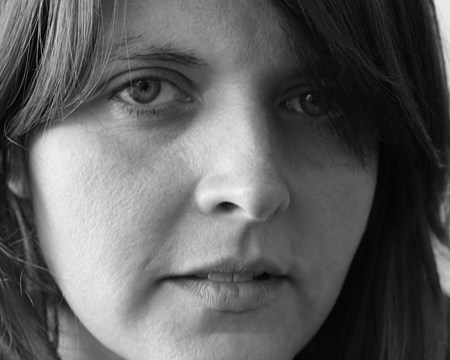Robin Dana, a native of Georgia, lives and works in St Petersburg, Florida. She earned a BA in Studio Art from Agnes Scott College in Atlanta and an MFA in Photography from the University of Connecticut. She has exhibited her work up and down the east coast, taught photography in the US and abroad, curated art exhibitions, written on contemporary artists, and worked in book and magazine publishing.
She has been photographing the mining industry in her hometown since 2004, resulting in the ongoing study Kaolin. Her recent work from residencies in DC, NY and travel abroad focuses on the scarification of our contemporary landscape. The collection includes photographs of the Hudson, Potomac, Savannah, Suwannee, Arno and Tiber River watersheds. Her work has been heavily influenced by the varied landscapes of her travels to Cuba, Costa Rica, Ecuador, Russia and Italy, both the destinations and the in-between.
______
Photographer Robin Dana opens Watershed at Beacon Institute
BEACON, NY—Beacon Institute for Rivers and Estuaries, a subsidiary of Clarkson University, is proud to showcase the photographs of Robin Dana in her exhibit Watershed: How Industry Has Changed the Water of the World. The exhibit runs from March 9 – October 7, 2013 at the Beacon Institute Gallery at 199 Main Street in Beacon, New York.
Dana’s exhibit is a vivid collection of images from the Hudson, Potomac and other watersheds around the world. Replete with fantastical colors in isolated landforms, her work reflects the scarification of our contemporary landscape with a resultant weird beauty, portrayed through large-format photography. Heavily influenced by her travels to Cuba, Costa Rica, Ecuador, Russia and Italy, Dana’s photographs reflect a unique serenity found in nature’s persistence in extreme conditions.
“Travel has confirmed my premise that water universally reflects nature’s ability to transform and beautify civilization’s misplaced stewardship,” says Dana. “My photographic efforts are a small part in the tradition of industrial landscape art memorializing the moment man blends with his most essential element.”
Robin Dana: Unnatural Landscapes
by Brian K. Mahoney, Chronogram Magazine 03/2013
When viewed in the context of the Beacon Institute for Rivers and Estuaries, Robin Dana’s photographs might be mistaken for the work of a crusading eco-artist, a Rachel Carson of the lens. The Beacon Institute, where Dana’s work will be shown starting on March 9, is an environmental research organization focusing on monitoring river ecosystems. At its gallery space on Main Street in Beacon, the Institute has been showcasing the work of water-focused artists for the past 10 years, including shows by Ted Spiegel, Eric Lind, and Joseph Squillante. Dana, a Florida-based photographer who’s spent time in the Hudson Valley, is not cut from quite the same archival paper as these notable locals. She shoots landscapes, predominantly aqueous images, but Dana’s not crafting nature porn—purple mountain majesties and Edenic river scenes. Her work, which closely observes the natural world where it intersects with human activity, is linked in spirit if not scale with that of Yann Arthus-Bertrand, whose aerial photographs in Earth from Above document the earth’s fragile environment while maintaining a rigid aesthetic discipline. “I’ve never photographed something because there was litter in it, or because there was an oil slick,” says Dana. “Oil on water is just really beautiful.”
Dana grew up in central Georgia, in an area known for its large deposits of the mineral kaolinite (also known as China clay, or kaolin), which is mined for use in an astounding variety of products, from ceramics to toothpaste. In 2004, Dana began a multi-year project shooting kaolin sites. She was particularly drawn to the pools of collected water in abandoned quarries, where the mixture of kaolin and chemicals used in the extraction process can produce fantastical colors. The best photos in this series capture microcosms—weeds submerged in milky water, piles of brown rocks of indeterminate size—that can almost be viewed in a similar light as abstract paintings, given their minimal figurative content and outsized concern for color, shape, and composition.
The kaolin series also became a self-taught master class in landscape photography for Dana, and provided the basis for her rigor about site selection, which she’s brought to her photographs of nature’s existence in extreme conditions in Italy, Cuba, and Washington, DC, among other locations. “It took me a long time to start to say something about the kaolin mines that wasn’t documentary but interpretive,” says Dana. “I learned about how ephemeral the visual experience was. I could go somewhere one day and the next day it could be totally different.”
Dana’s landscapes are models of surface serenity—still pools, placid streams—that roil underneath with our misplaced stewardship of the natural world. Yet the work is tight-lipped as to its opinion of natural grandeur vs. despoliation—the landscape only becomes interesting to Dana once it’s been affected by civilization.
Dana has lived in St. Petersburg for the past two years, and she has yet to find a nearby site that excites her attraction to the “intermixing of strange and unnatural colors in spaces that otherwise ought to be beautiful.” Clement weather and pretty beaches can be tough on an artist. “The water is blue and the days are too sunny. I haven’t found the right landscape for my work yet, but I will. It just takes me some time to find the grit.”
Robin Dana’s photographic exhibition “Watershed: How Industry Has Changed the Water of the World” will be shown at the Beacon Institute for Rivers and Estuaries Gallery, 199 Main Street in Beacon, from March 9 through October 7.
